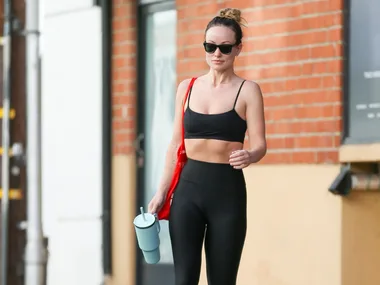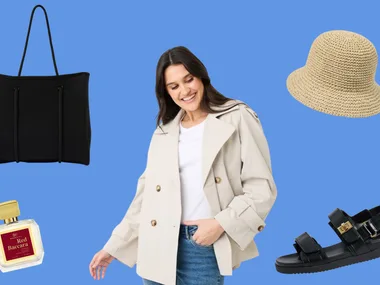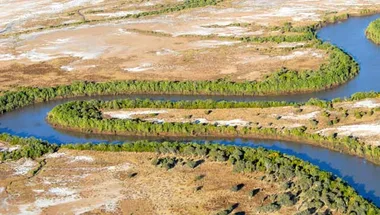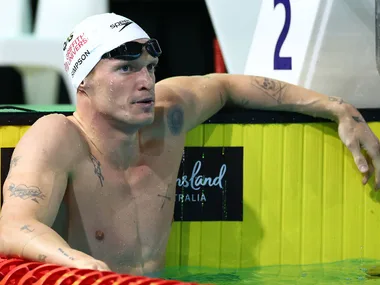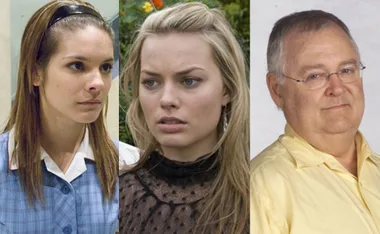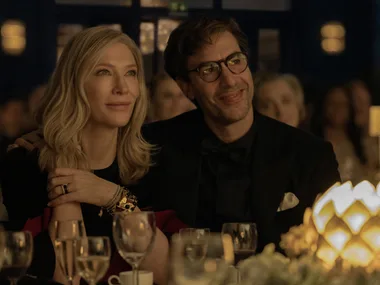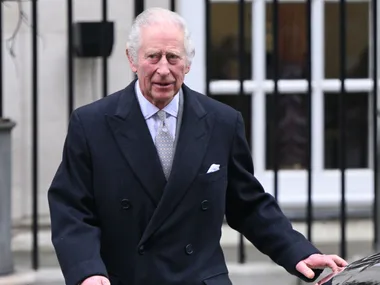Sydney Harbour, New South Wales
Sydney is ranked as one of the most beautiful cities in the world because of its sensational harbour. Covering an area of 55km, this sparkling body of deep blue water is Australia’s favourite playground. And what a playground it is! Besides the man-made marvels of the Opera House and Bridge, there are more than 40 harbour beaches and a dozen spectacular walks along 240km of foreshore. People come from far and wide to do the Bridge walk, picnic on one of its many islands, swim with the largest sharks in captivity, dive around some of the 87 harbour wrecks, catch the Manly ferry to see the sights, sail, fish or dine waterside on the freshest seafood. Sometimes taken for granted by Sydneysiders, it is the number one natural attraction in Australia. It may not be a World Heritage site, but just up the road is another true-blue attraction that is – the Blue Mountains. Just 112km along the M4 from Sydney is Katoomba, the old spa town at the centre of this strikingly beautiful national park. Bush-clad sandstone cliffs, waterfalls, monoliths such as the Three Sisters, 400-million-year-old limestone caves and trekking trails for every level of fitness make it Sydney’s second favourite playground. On the return journey to Sydney, it’s possible to visit the apple orchard country on either side of the historic Bells Line Road.
PLACES TO STAY:
Blue Hotel, Sydney (02 9331 9000; www.tajhotels.com/sydney. Sydney Lakeside Narrabeen holiday park (1800 008 845; www.big4.com.au. Ocean Beach Holiday Park, Umina (1800 611 522; www.big4.com.au). Lilianfels, Katoomba (1800 024 452; www.lilianfels.com.au). Mercure Hydro Majestic, Medlow Bath (1300 656 565; www.accorhotels.com.au).
ROUTE:
Sydney, Katoomba, Sydney. To plan your journey, visit: www.mynrma.com.au and www.visitnsw.com.au.
Great Barrier Reef, Queenslands
Road safari: Cairns to Port Douglas and Daintree; round trip, approx. 332km. Visit www.exploreaustralia.com for details. One of the most beautiful terrestrial sights from space, the Great Barrier Reef is the largest collection of coral structures in the world. It stretches north to south for 2300km, from the Tropic of Capricorn to Papua New Guinea. Home to 400 types of coral, 1500 species of fish and 4000 types of mollusc, it has more than 900 islands and coral cays, and covers an area of 348,700sq km. It’s between two and 18 million years old and, not surprisingly, is on the World Heritage list. There are thousands of places from which to visit this spectacle, but we’ve chosen Far North Queensland, simply because this is where the reef meets the remnants of Australia’s tropical rainforest, some of which dates back a staggering 110 million years (that’s older than the Amazon). Cairns, Port Douglas and Cooktown (strictly for those with 4WD vehicles) are great bridging points to visit the reef. The Captain Cook Highway is a beautiful coastal drive from Cairns to Port Douglas, and leads to the rainforest communities of Mossman and Daintree, and eventually Cape Tribulation. On the return journey, it’s worth making an inland detour to the Atherton Tableland and Kuranda, which has Skyrail, a 7.5km cable car ride that glides over the rainforest canopy and the spectacular waterfall at Barron Gorge.
PLACES TO STAY:
Cairns Coconut Caravan Resort (1800 636 622 or www.big4.com.au). Pullman Reef Casino, Cairns (1800 808 883; www.accorhotels.com.au). Thala Beach Lodge, Port Douglas (07 4098 5700; www.slh.com). Silky Oaks Lodge (1800 737 678 or www.silkyoakslodge.com.au). Glengarry Caravan Park, Port Douglas (1800 888 134; www.big4.com.au).
ROUTE:
Cairns, Port Douglas, Mossman, Daintree, Atherton, Cairns. To plan your journey, visit www.racq.com.au and www.tropicalaustralia.com.
The Twelve Apostles
The twelve apostles are the stars of a spectacular show known as the Great Ocean Road. These colossal limestone towers rise from the sea against the backdrop of huge cliffs. Known as one of the world’s most scenic routes, on a par with the great coastal drives of California and South Africa’s Cape of Good Hope, the Great Ocean Road stretches 232km from Torquay to Allansford, near Warrnambool. Thanks to a network of boardwalks and viewing platforms atop the 70-metre cliffs, visitors experience sweeping, awe-inspiring vistas. One option on the way to the Great Ocean Road is to visit the Mornington Peninsula. Bounded by the calmer waters of Port Phillip Bay and the surf of Bass Strait, this charming peninsula – with its vineyards, stately country houses, beach huts and heritage towns of Sorrento and Portsea – is one of Melbourne’s favourite weekend retreats. To get to the Great Ocean Road, cross the entrance of Port Phillip Bay on the car ferry to Queenscliff and motor to the seaside towns of Torquay, Lorne and Apollo Bay.
PLACES TO STAY:
Kangerong Holiday Park, Dromana (tel: 1800 670 859; www.big4.com.au). Beacon Resort Holiday Park, Queenscliff (tel: 1800 351 152; www.big4.com.au), holiday units from $127. The Vue hotel, Queenscliff (tel: 03 5258 1544; www.vuegrand.com.au). Chocolate Gannets, Apollo Bay (tel: 0500 500 139; www.chocolategannets.com.au). The Victoria hotel, Port Fairy (tel: 03 5568 2891).
ROUTE: Melbourne, Sorrento, Portsea (ferry to Queenscliff), Lorne, Port Fairy, Melbourne. To plan your journey, visit www.nowwhereroute.com/tourismvic/RoutePlanner and www.visitvictoria.com.au.
Uluru, Northern Territory
Road safari: Alice Springs to Uluru-Kata Tjuta National Park; round trip approx. 1020km. Visit www.exploreaustralia.com for details.
The largest monolith in the world, Uluru is never more beautiful than when daylight starts to fail. Known as one of the greatest sunset experiences in the world, the Rock undergoes an extraordinary colour shift through red to purple as the sun dips below the horizon. It appears to radiate a blood-coloured light all of its own, before fading into a brooding silhouette etched on a starry sky. Now that the traditional owners request people don’t climb over the Rock, an equally spectacular option is to walk among the Olgas, a collection of impressive red domes 40km west. The three-hour hike through the Valley of the Winds at dawn is not to be missed. On the way to the Rock, almost everyone visits Alice Springs in the Macdonnell Ranges, where you’ll find the fascinating Alice Springs Desert Park, and on the 440km journey down the Stuart and Lasseter highways to Uluru, break the trip at the Henbury Meteorite Craters. Yet nothing will prepare you for Uluru’s awesome bulk rising out of the desert.
PLACES TO STAY:
Macdonnell Range Holiday Park, Alice Springs (1800 808 373; www.big4.com.au). Hilltop B&B, Alice Springs (08 8955 0208). Sails in the Desert Hotel, Yulara (1300 134 044; www.voyages.com.au). Lost Camel Hotel, Yulara (1300 134 044; www.voyages.com.au).
ROUTE:
Alice Springs, Uluru, the Olgas, Alice. To plan your journey, visit www.ntexplore.com and www.travelnt.com.
Cradle Mountain, Tasmania
Road safari: Launceston, Cradle Mountain, Deloraine, Freycinet National Park, Launceston; round trip approx. 700km. Visit www.exploreaustralia.com for details.
Cradle Mountain sits like a sentinel over Tasmania’s 1.38 million-hectare World Heritage wilderness. Its summit, consisting of several saw-toothed peaks, looks as ancient as the world itself and rises above a mesmerising vista of glacial lakes, craggy peaks and tracts of temperate rainforest with 1000-year-old King Billy Pines. Today, people flock there to hike along its trails. Most popular is the walk around Dove Lake (6km; 2.5 hours), past sandy coves, through mossy forests and delicate natural shrub gardens that appear to float Japanese-style just above the crystal-clear waters of the lake. About 340km to the east is Tassie’s sunniest coast and the Freycinet National Park – with its huge pink granite boulders and white sandy beaches, including Wineglass Bay, voted one of the 10 best beaches in the world. Walk around the national park and visit the rustic little fishing village of Coles Bay on Great Oyster Bay.
PLACES TO STAY:
Cradle Mountain Tourist Park (1800 068 574; www.big4.com.au). Cradle Mountain Lodge (1800 737 678; www.voyages.com.au). Freycinet Lodge (1800 737 678; www.freycinetlodge.com.au). Iluka Holiday Centre, Coles Bay (1800 786 512; www.big4.com.au).
ROUTE:
Launceston, Deloraine, Freycinet. To plan your journey, visit www.tourtasmania.com and www.discovertasmania. com.au.
Wilpena Pond, South Australia
Road safari: Adelaide, Barossa Valley, Clare Valley, the Flinders Ranges; round trip approx. 920km. Visit www.exploreaustralia. com for details.
Looking like a meteor-impact crater, the giant bowl of Wilpena Pound has been compared to Jules Verne’s Lost World. This natural amphitheatre, surrounded as it is by towering ramparts, was caused by natural erosion and not an extra-terrestrial body, as many people think. There is only one way in and out of the Pound, and that’s through a narrow gorge, partially hidden by a great slab of fallen sandstone, called Sliding Rock. The Pound is in a hauntingly beautiful part of the Flinders Ranges National Park. The journey north from Adelaide is a wine aficionado’s delight, passing as it does through the vineyards of the Barossa and Clare valleys. Both valleys have historic communities, such as Tanunda, Angaston, Nuriootpa, Clare and Mintaro, with vineyards and church spires, and plenty of fine food, heritage hotels and pretty B&Bs. It is a journey guaranteed to give you the good life and an outback experience in one.
PLACES TO STAY:
Abbotsford Country House, Barossa (08 8524 4662). Wilpena Pound Resort (08 8648 0004). Hawker Caravan Park (1800 686 607; www.big4.com.au).
ROUTE:
Adelaide, Barossa and Clare valleys, Hawker, Wilpena Pound. To plan your journey, visit www.raa.net and www.southaustralia.com.
Bungle Bungle Range, Western Australia
Road safari: Great Northern Highway from Kununurra to Broome; round trip approx. 1050km. Visit www.exploreaustralia.com.
The Bungle Bungle’s are one of the most awe-inspiring sights in the Kimberley, Australia’s last frontier. From the air, these black and orange sandstone domes look like giant beehives – and at 1.6 billion years old, they rank among the most ancient landmarks on the planet. Part of the Purnululu National Park, the Bungle Bungles can be viewed by a scenic flight from Kununurra. Other visitors prefer the 4WD/camping option, which allows them to walk among the domes. Two roads cross the region from Kununurra to Broome – the sealed Great Northern Highway and the strictly 4WD Gibb River Road. Whatever your chosen route, the Kimberley offers harsh, but breathtakingly beautiful scenery. From the frontier town of Kununurra, visitors travelling west pass the scenic Cockburn Range, the gorge country around El Questro, the million-acre cattle station and resort, and several rustic outback settlements, before arriving at the Indian Ocean resort town of Broome.
PLACES TO STAY:
El Questro, two hours from Kununurra (www.elquestro.com.au) for Emma Gorge cabins, Station bungalows and luxurious Homestead. Cable Beach Caravan Park (1800 551 196; www.big4.com.au). Cable Beach Club Resort (1800 199 099; www.cablebeachclub.com); The Kimberley Grand, Kununurra (08 9166 5600; www.pinctada.com.au)
ROUTE:
Kununurra to Broome on the Old Gibb River Road (4WD highly recommended). To plan your journey, visit www.kimberley.wa.gov.au and www.kimberleytourism.com.
Newsletter conversion description. Get the latest in your inbox.

